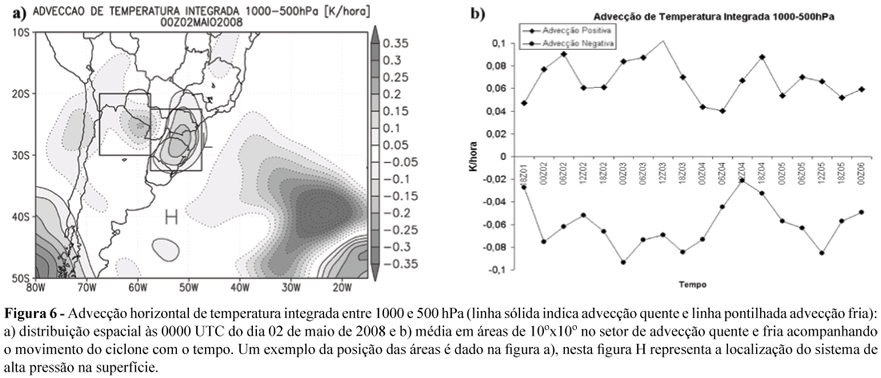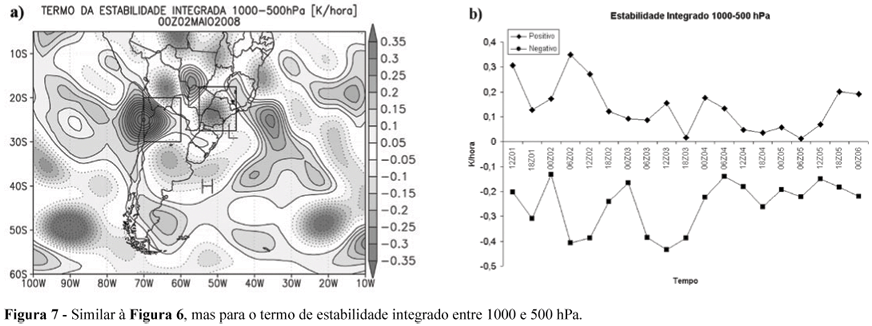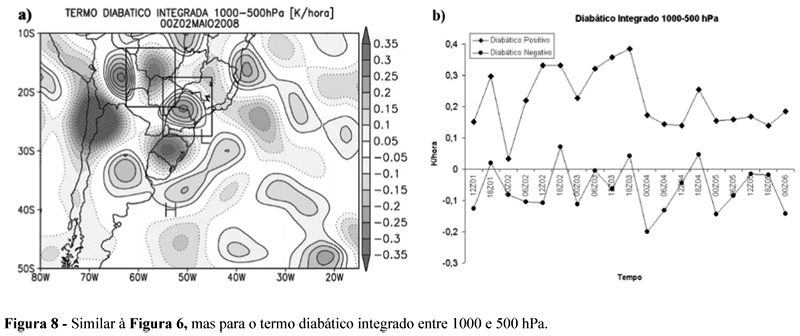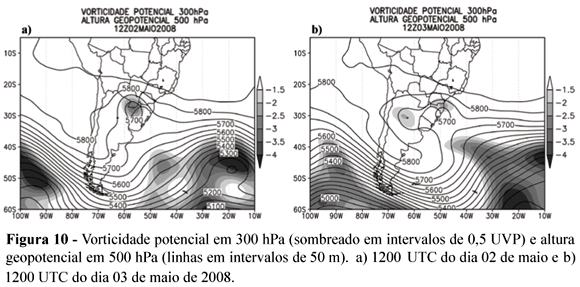On the first week of May 2008, during four days, a semi-stationary surface cyclone acted over the coast of southern Brazil. This system was responsible for large amount of rain and strong near surface winds over Rio Grande do Sul and Santa Catarina causing many damages (fallen trees, floodings and landslides). This work evaluated cyclone development process to understand the reasons for its slow displacement, once most cyclones developed in this region move faster. The Sutcliffe development equation showed that cyclonic absolute vorticity advection in middle troposphere, and positive thermal advection in layer between 1000-500 hPa were important mechanisms for cyclogenesis processes. In this same period, diabatic heating also contributes to cyclogenesis as far as it was opposite to adiabatic cooling due to strong upward movement. Cyclonic absolute vorticity advection which propitiated cyclogenesis was associated with an Upper Level Cyclonic Vortex (ULCV) developed in a potential vorticity anomaly region. The ULCV was semi-stationary and part of a blocking dipole pattern. This blocking intensified a surface anticyclone at south/east of the cyclone, contributing to the cyclone staying semi-stationary near the coast of southern Brazil. The slow and unusual surface cyclone movement to south and sometimes to southwest was associated with middle level cyclonic absolute vorticity and warm air advections in their southern sector. Only when middle levels blocking and middle/high levels potential vorticity anomaly weakened, surface cyclone moved away from the coast of Southern Brazil.
cyclogenesis; ULCV; Brazilian south coast



















